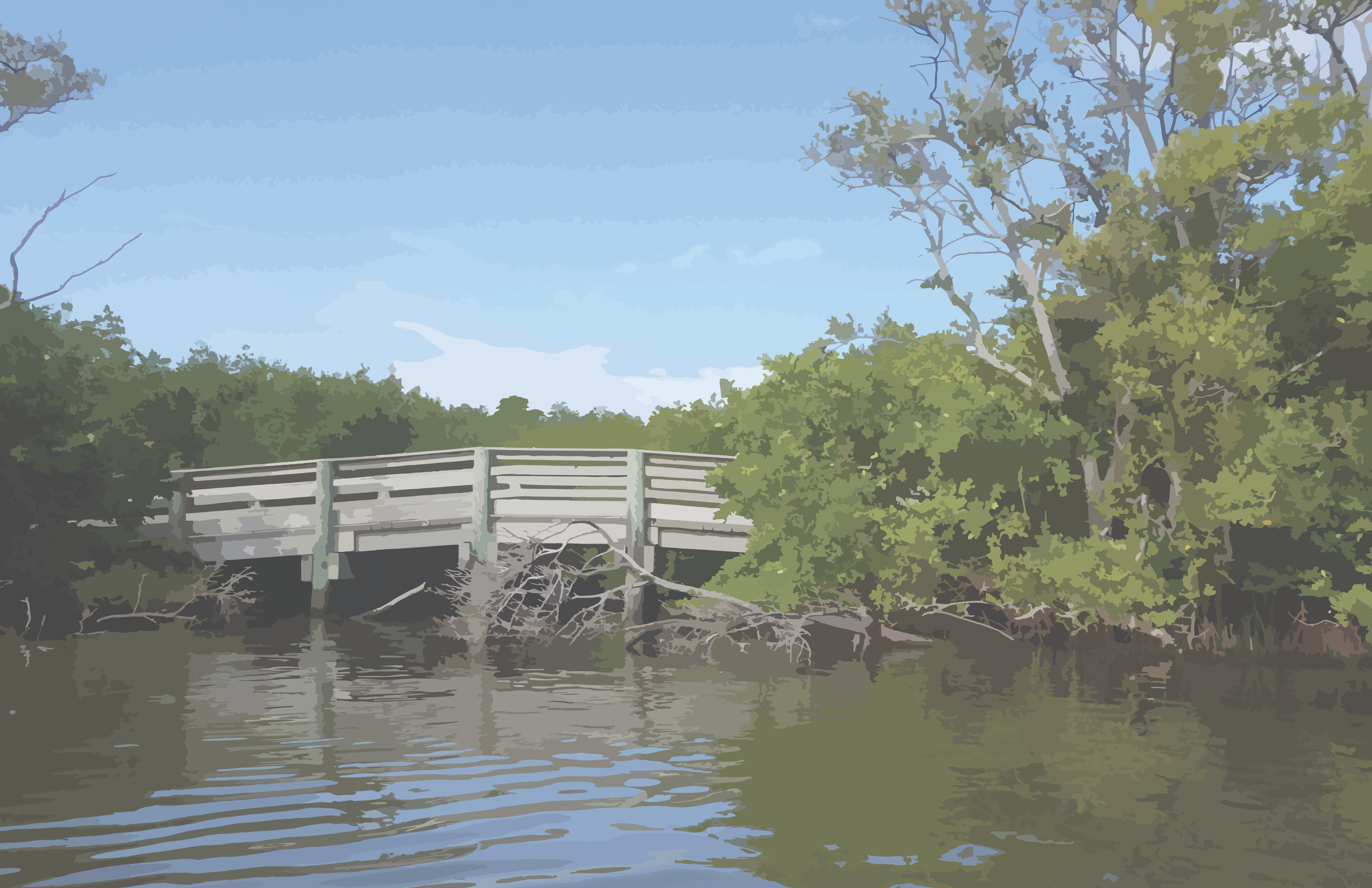
One of the most ecologically valuable parcels of land in the region – a mosaic of tidal wetlands surrounding the old Clearwater Christian College – is undergoing major renovations. The changes bode well for the segment of Tampa Bay that is sometimes called its “problem child.”
Nearly completely surrounded by urban land uses, Old Tampa Bay has lagged behind other bay segments in water quality improvements and seagrass recovery. A part of the issue is lack of tidal circulation – it is partially cut off from the rest of the bay by the causeway.
In July 2016, the city of Clearwater purchased about 110 acres of wetlands and mangrove forest surrounding the former college. Later in 2016, the Drs. Kiran & Pallavi Patel Family Foundation Inc. (which also funded the Patel College of Global Sustainability at University of South Florida) purchased the college with plans to open a brand-new osteopathic medical center.

The city’s master plan is nearing completion now, with a strong focus on restoring tidal circulation in Cooper’s Bayou as well as expanding the small waterfront park on Bayshore Boulevard for more recreational opportunities.
“It’s a massive investment for us,” notes Sarah Kessler, the city’s environmental specialist. Most of the 331-acre property is submerged or tidal wetlands and mangrove forests. The bayou itself is so blocked by development that there is almost no tidal exchange in the southern section, resulting in a thick accumulation of mucky sediment with murky water and few seagrasses.
Opening the bayou to Tampa Bay was a top priority, Kessler said. “Part of the master plan is a water flushing model. It measures the duration at which stormwater is held in the bayou. Based on the results of that model we will move forward with appropriate water quality improvement projects.”

For the short term, the city is committed to building a new, much larger, connection at Damascus Road (which runs north through the peninsula), a channel under the Courtney Campbell Causeway, and opening mosquito ditches to improve tidal flow. Based on the results of those projects the city may – or may not – dredge the bayou from the south to the north to further increase tidal flow.
Enhanced recreational facilities include:
- The current park at Bayshore Boulevard will be expanded with restrooms and additional parking.
- A separate entrance to the boardwalks and nature trails will make them accessible from the city’s community center on the Highway 60.
- A viewing area will be built near the eagle’s nest, with observation towers and platforms near the boardwalks.
- The Florida Department of Transportation has funded design plans for a pedestrian/cyclist access from the park to the Courtney Campbell Trail that runs along the south edge of the causeway.
- For boaters, plans include opening old mosquito drainage ditches to convert them into kayak trails – also increasing tidal flows — and improving the current kayak launch facility.

Funding for the ambitious plan has not been finalized, Kessler adds. Some money will come from the city’s stormwater utility fee, and the city will pursue grant opportunities with state and local agencies. “We think this is going to become the kind of park that people across the state will want to visit and enjoy,” she said.

Plans for the Patel facility are not as far along, but are equally ambitious. They include certification as a green building through the Leadership in Energy and Environmental Design (LEED) rating system. “We’re aiming for LEED gold certification, or possibly silver,” said Bill West, the Patel foundation’s director of development. “We’re going through the process now.”
Rather than scattered buildings located across the 27-acre site, the new school will have a much smaller footprint. The state-of-the-art facility is designed to take advantage of its waterfront site and become an attraction for students from across the region and around the world.
Plans also call for a parking garage – eliminating multiple impervious parking lots — and rehabilitating the aging retention ponds on the property to the latest standards.
Patel hopes to kickstart the water quality aspects of the project by replacing the 14-inch culvert under Damascus Road with a box culvert “something near 20 feet wide,” West said. “Fourteen inches is far, far from adequate to connect the bay with the wetlands areas that we want to protect.”
